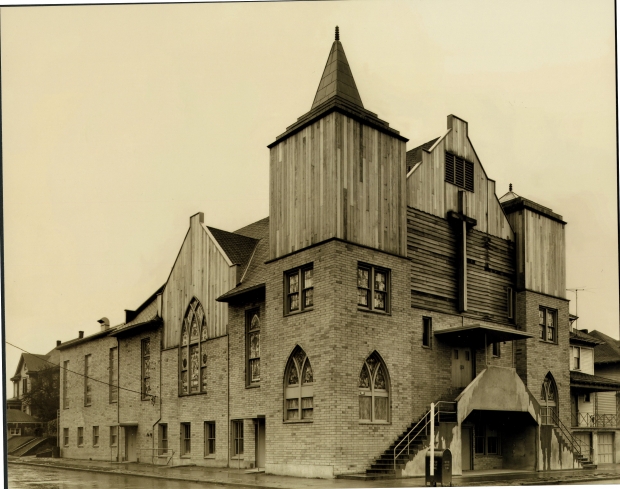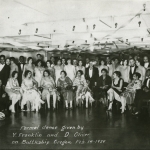Description
Vancouver Avenue First Baptist Church is a revered institution that has served as a hub of political, civic, & spiritual life in Portland’s African-American community since its inception. Originally formed under the name First Baptist Church of Burton Homes in 1944 Vancouver, Washington, most of the early congregants were African-Americans from the South who migrated to the Pacific Northwest seeking employment in the defense industry during World War II. The church was displaced twice after V-Day, once with the closing of the eponymous Burton Homes in 1945 and again when their new space at nearby the Bagley Downs housing projects was decommissioned. This prompted a move to segregated Portland’s Albina neighborhood, where they joined a burgeoning Black enclave in 1946. During this period the congregation also changed leadership with appointment of O.B. Williams as pastor, a title he would hold for almost fifty years. After briefly occupying the Prince’s Hall Masonic Temple at 116 NE Russell, the congregation purchased & rehabilitated a dilapidated building at 1914 N. Vancouver in 1947 (subsequently this property was razed for the construction of I-5). After relocating, the congregation changed its name to the now familiar Vancouver Avenue Baptist Church. In the aftermath of the Vanport flood in 1948 many residents from that housing project’s Community Baptist Church joined Vancouver Avenue. As more African Americans were forced to settle in Albina, Reverend Williams was pushed to seek another space just a few years after buying their first building. The shrinking Central Methodist Church, a congregation of mostly northern European immigrants, sold their building at 3138 N. Vancouver to O.B. Williams’ expanding flock. The new occupants marched down the street to their new home on Palm Sunday of 1951 and have continued to hold services at the space since. Church historian Raymond Burell spearheaded a successful effort to have this building placed on the National Register of Historic Places in 2016 and it continues to function as a place of worship, civil rights landmark, and spiritual home for many Black Portlanders. This photo features the current building during the final stages of a renovation project in the late 1950s. Because banks were unwilling to make loans to African-Americans, O.B. Williams found capital for the expansion by borrowing against the value of a personal life insurance policy.
Download Files
Collections with this item
Details
Digital Publisher
Subject.Topic
Subject.Place
Rights & Usage
In copyright. Used by permission of the copyright holder, who retains publication rights thereto. Use of resources from this collection beyond the exceptions provided for in the Fair Use and Educational Use clauses of the U.S. Copyright Law may violate federal law. The Oregon Historical Society is the owner of the materials in the Research Library and makes available reproductions for research, publication, and other uses. Written permission must be obtained from the Research Library before any reproduction use. The Society does not necessarily hold copyright to all of the materials in the collections. In some cases, permission for use may require seeking additional authorization from the copyright owners. Photographs Dept., Oregon Historical Society
Identifier
- PUpic_001376
Type
Date.Range
Format.Original
File format
Shelf.Location
- Coll 189 Vancouver Baptist\Box 1 f6






















































Add new comment